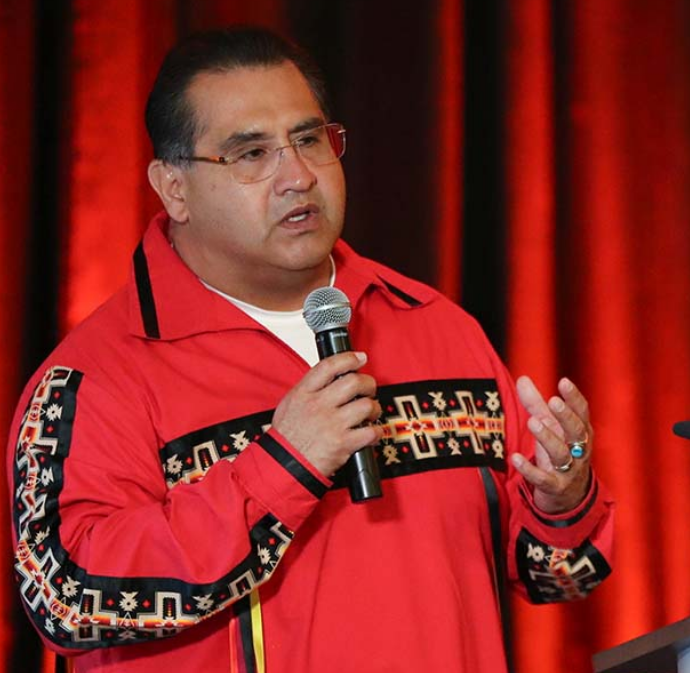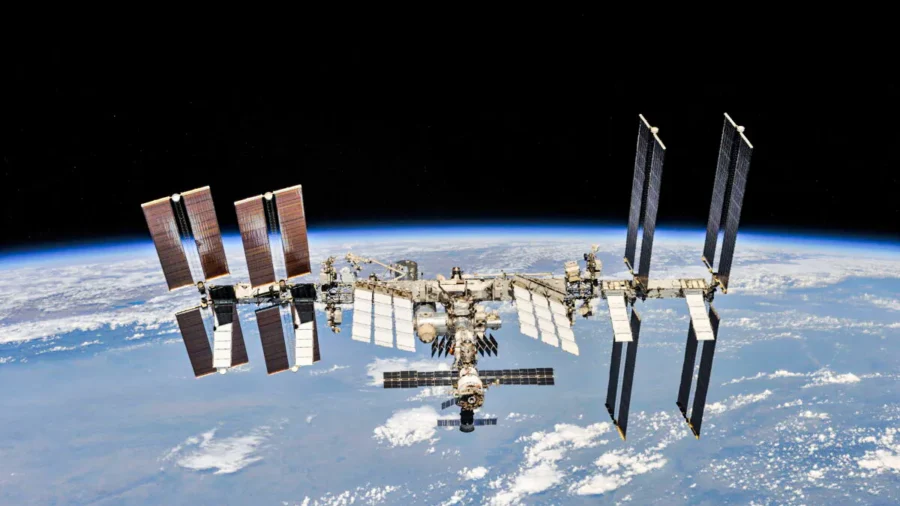
Reasons Supporting Netanyahu Is The US’ Big Middle Eastern Mistake – OpEd
By Juan Cole
At least one thing is now obvious in the Middle East: The Biden administration has failed abjectly in its objectives there, leaving the region in dangerous disarray. Its primary foreign policy goal has been to rally its regional partners to cooperate with Israeli Prime Minister Benjamin Netanyahu’s extremist government. Simultaneously, it would uphold a “rules-based” international order and block Iran and its allies in their policies. Clearly, such goals have had all the coherence of a chimera and have failed for one obvious reason.
US President Joe Biden’s Achilles’ heel has been his “bear hug” of Netanyahu, who allied himself with the Israeli equivalent of neo-Nazis and launched a ruinous total war on the people of Gaza. He did this in the wake of the horrific October 7 Hamas terrorist attack Israel suffered in 2023.
Biden also signed on to the Abraham Accords, a project initiated in 2020 by Jared Kushner, the son-in-law and special Middle East envoy of then-President Donald Trump. Through them the United Arab Emirates, Bahrain and Morocco all agreed to recognize Israel’s statehood. In return, Israel granted them investment and trade opportunities, as well as access to American weaponry and a US security umbrella.
Washington, however, failed to incorporate Saudi Arabia into that framework. It has also faced increasing difficulty keeping the accords themselves in place, given the region’s increasing anger and revulsion over the ongoing civilian death toll in Gaza. Typically, just the docking of an Israeli ship at the Moroccan port of Tangier this summer set off popular protests that spread to dozens of cities in that country. And that was just a taste of what could be coming.
Breathtaking hypocrisy
Washington’s efforts in the Middle East have been profoundly undermined by its breathtaking hypocrisy. After all, the Biden team has gone blue in the face decrying the Russian occupation of parts of Ukraine and its violations of international humanitarian law in killing so many innocent civilians there. In contrast, the administration let Netanyahu’s government completely disregard international law when it comes to its treatment of the Palestinians.
This summer, the International Court of Justice ruled that the entire Israeli occupation of Palestinian territories is illegal in international law. In response, the US and Israel both thumbed their noses at the finding. In part as a response to Washington’s Israeli policy, no country in the Middle East and very few nations in the global South have joined its attempt to ostracize President Vladimir Putin’s Russia.
Worse yet for the Biden administration, the most significant divide in the Arab world between secular nationalist governments and those that favor political Islam has begun to heal in the face of the perceived Israeli threat. Turkey and Egypt have long had their daggers drawnover their differing views of the Muslim Brotherhood, the fundamentalist movement that briefly came to power in Cairo in 2012–2013. Now they have begun repairing their relationship, specifically citing the menace posed by Israeli expansionism.
US Secretary of State Antony Blinken has been persistently pressing Saudi Arabia, a key US security partner, to recognize Israel’s statehood at a moment when the Arab public is boiling over what they see as a genocide campaign in Gaza. This is the closest thing since the Trump administration to pure idiocracy. Washington’s pressure on Riyadh elicited the pitiful plea from Saudi Crown Prince Mohammed Bin Salman that he fears being assassinated were he to normalize relations with Tel Aviv now. And consider that ironic given his own past role in ordering the assassination of Saudi journalist Jamal Khashoggi.
In short, the ongoing inside-the-Beltway ambition to secure further Arab recognition of Israel amid the annihilation of Gaza has the US’s security partners wondering if Washington is trying to get them killed. This is anything but a promising basis for a long-term alliance.
Global delegitimization
The science-fiction-style nature of US policy in the Middle East is starkly revealed when you consider the position of Jordan, which has a peace treaty with Israel. In early September, its foreign minister, Ayman Safadi, issued a warning: Any attempt by the Israeli military or its squatter-settlers to expel indigenous West Bank Palestinians to Jordan would be considered an “act of war.” Such anxieties might once have seemed overblown, but the recent stunning (and stunningly destructive) Israeli military campaign on the Palestinian West Bank, including bombings of populated areas by fighter jets, has tactically begun to resemble the campaign in Gaza. And keep in mind that, as August ended, Foreign Minister Israel Katz even urged the Israeli army to compel Palestinians to engage in a “voluntary evacuation” of the northern West Bank.
Not only is the expulsion of Palestinians now the stated policy of cabinet members like Jewish Power extremist Itamar Ben-Gvir; it’s the preference of 65% of Israelis polled. When Israel and Jordan begin talking about war, you know something serious is going on — the last time those two countries actively fought was in the 1973 October War, during the administration of US President Richard Nixon.
In short, Netanyahu and his extremist companions are in the process of undoing all the diplomatic progress their country achieved in the past half-century. Ronen Bar, head of Israel’s domestic Shin Bet intelligence agency, warned in August that the brutal policies the extremists in the government were pursuing are “a stain on Judaism” and will lead to “global delegitimization, even among our greatest allies.”
Turkey, a NATO ally with which the US has mutual defense obligations, has become vociferous in its discontent with Biden’s Middle Eastern policy. Although Turkey recognized Israel in 1949, under Turkish President Recep Tayyip Erdogan of the pro-Islam Justice and Development Party, interactions had grown rocky even before the Gaza nightmare. Until then, their trade and military ties had survived occasional shouting matches between their politicians. The Gaza genocide, however, has changed all that. Erdogan even compared Netanyahu to Adolf Hitler and then went further still, claiming that, in the Rafah offensive in southern Gaza in May, “Netanyahu has reached a level with his genocidal methods that would make Hitler jealous.”
Worse yet, the Turkish president, referred to by friend and foe as the “sultan” because of his vast power, has now gone beyond angry words. Since last October, he’s used Turkey’s position in NATO to prohibit that organization from cooperating in any way with Israel. This is on the grounds that it’s violating the NATO principle that harm to civilians in war must be carefully minimized. The Justice and Development Party leader also imposed an economic boycott on Israel. It has interrupted bilateral trade that previously reached $7 billion a year and sent the price of produce in Israel soaring, while leading to a shortage of automobiles on the Israeli market.
Erdogan’s Justice and Development Party represents the country’s small towns, rural areas, Muslim businesses and entrepreneurs, constituencies that care deeply about the fate of Muslim Palestinians in Gaza. And while Erdogan’s high dudgeon has undoubtedly been sincere, he’s also pleasing his party’s stalwarts in the face of an increasing domestic challenge from the secular Republican People’s Party. Additionally, he’s long played to a larger Arab public, which is apoplectic over the unending carnage in Gaza.
The alliance of Muslim countries
Although it was undoubtedly mere bluster, Erdogan even threatened a direct intervention on behalf of the beleaguered Palestinians. In early August, he said, “Just as we intervened in Karabakh [disputed territory between Azerbaijan and Armenia], just as we intervened in Libya, we will do the same to them.” In early September, the Turkish president called for an Islamic alliance in the region to counter what he characterized as Israeli expansionism:
“Yesterday, one of our own children, [Turkish-American human rights advocate] Ayşenur Ezgi Eygi, was vilely slaughtered [on the West Bank]. Israel will not stop in Gaza. After occupying Ramallah [the de facto capital of that territory], they will look around elsewhere. They’ll fix their eyes on our homeland. They openly proclaim it with a map. We say Hamas is resisting for the Muslims. Standing against Israel’s state terror is an issue of importance to the nation and the country. Islamic countries must wake up as soon as possible and increase their cooperation. The only step that can be taken against Israel’s genocide is the alliance of Muslim countries.”
In fact, the present nightmare in Gaza and the West Bank may indeed be changing political relationships in the region. After all, the Turkish president pointed to his rapprochement with Egypt as a building block in a new security edifice he envisions. Egyptian President Abdel Fattah al-Sisi made his first visit to Ankara on September 4, following an Erdogan trip to Cairo in February. And those visits represented the end of a more than decade-long cold war in the Sunni Muslim world over al-Sisi’s 2013 coup against elected Muslim Brotherhood Egyptian President Mohamed Morsi, whom Erdogan had backed.
Despite its apparent embrace of democratic norms in 2012–2013, some Middle Eastern rulers charged the Brotherhood with having covert autocratic ambitions throughout the region and sought to crush it. For the moment, the Muslim Brotherhood and other forms of Sunni political Islam have been roundly defeated in Egypt, Syria, Tunisia and the Persian Gulf region. Erdogan, a pragmatist despite his support for the Brotherhood and its offshoot Hamas, had been in the process of getting his country the best possible deal, given such a regional defeat, even before the Israelis struck Gaza.
Netanyahu’s forever war in Gaza
For his part, Egypt’s al-Sisi is eager for greater leverage against Netanyahu’s apparent plan for a forever war in Gaza. The Gaza campaign has already inflicted substantial damage on Egypt’s economy, since Yemen’s Houthis have supported the Gazans with attacks on container ships and oil tankers in the Red Sea. In turn, that has diverted traffic away from it and from the Suez Canal, whose tolls normally earn significant foreign exchange for Egypt. In the first half of 2024, however, it took in only half the canal receipts of the previous year. Although tourism has held up reasonably well, any widening of the war could devastate that industry, too.
Egyptians are also reportedly furious over Netanyahu’s occupation of the Philadelphi Corridor south of the city of Rafah in Gaza. They also despise his blithe disregard of Cairo’s prerogatives to patrol that corridor, granted under the Camp David agreement. The al-Sisi government, along with Qatar’s rulers and the Biden administration, has been heavily involved in hosting (so far fruitless) peace negotiations between Hamas and Israel. The Egyptian government seems to be at the end of its tether, increasingly angered at the way the Israeli prime minister has constantly tacked new conditions onto any agreements being discussed, which have caused the talks to fail.
For months, Cairo has also been seething over Netanyahu’s charge that Egypt allowed tunnels to be built under that corridor to supply Hamas with weaponry. Cairo insists that the Egyptian army had diligently destroyed 1,500 such tunnels over the past decade. Egypt’s position was recently supported by Nadav Argaman, a former head of the Israeli Shin Bet intelligence agency, who said, “There is no connection between the weaponry found in Gaza and the Philadelphi Corridor.” Of Netanyahu, he added, “He knows very well that no smuggling takes place over the Philadelphi Corridor. So, we are now relegated to living with this imaginary figment.”
In the Turkish capital of Ankara, al-Sisi insisted that he wanted to work with Erdogan to address “the humanitarian tragedy that our Palestinian brothers in Gaza are facing in an unprecedented disaster that has been going on for nearly a year.” He underscored that there was no daylight between Egypt and Turkey “regarding the demand for an immediate ceasefire, the rejection of the current Israeli escalation in the West Bank, and the call to start down a path that achieves the aspirations of the Palestinian people to establish their independent state on the borders of June 4, 1967, with East Jerusalem as its capital.” He also pointed out that such positions are in accord with United Nations Security Council resolutions. Al-Sisi pledged to work with Turkey to ensure that humanitarian aid was delivered to Gaza despite “the ongoing obstacles imposed by Israel.”
To sum up, the ligaments of US influence in the Middle East are now dissolving before our very eyes. Washington’s closest allies, like the Jordanian and Saudi royal families, are terrified that Biden’s bear hug of Netanyahu’s war crimes, coupled with the fury of their own people, could destabilize their rule. Countries that not so long ago had correct, if not warm, relations with Israel like Egypt and Turkey are increasingly denouncing that country and its policies.
The alliance of US partners in the region with Israel against Iran that Washington has long worked for seems to be coming apart at the seams. Countries like Egypt and Turkey are instead exploring the possibility of forming a regional Sunni Muslim alliance against Netanyahu’s geopolitics of Jewish power that might, in the end, actually reduce tensions with Tehran.
That things have come to such a pass in the Middle East is distinctly the fault of the Biden administration and its position — or lack thereof — on Israel’s nightmare in Gaza (and now the West Bank). Today, sadly, that administration is wearing the same kind of blinkers regarding the war in Gaza that US President Lyndon B. Johnson and his top officials once sported when it came to the Vietnam War.
The views expressed in this article are the author’s own and do not necessarily reflect Fair Observer’s editorial policy.
- About the author: Juan Cole is Richard P. Mitchell Collegiate Professor of History at the University of Michigan. For three decades, he has sought to put the relationship of the West and the Muslim world in historical context. His most recent book is “Muhammad: Prophet of Peace Amid the Clash of Empires” (Nation Books, 2018), and he is the author of “Engaging the Muslim World” (Palgrave Macmillan, 2009) and “Napoleon’s Egypt: Invading the Middle East” (Palgrave Macmillan, 2007). Cole has written widely about Egypt, Iran, Iraq, and South Asia. He has commented extensively on al-Qaeda and the Taliban, the Iraq War, the politics of Pakistan and Afghanistan, and Iranian domestic struggles and foreign affairs.
- Source: This article was published by Fair Observer and TomDispatch first published this article.
Fair Observer
Fair Observer is an independent, nonprofit media organization that engages in citizen journalism and civic education. Fair Observer's digital media platform has 2,500 contributors from 90 countries, cutting across borders, backgrounds and beliefs. With fact-checking and a rigorous editorial process, Fair Observer provides diversity and quality in an era of echo chambers and fake news. Fair Observer's education arm runs training programs on subjects such as digital media, writing and more. In particular, Fair Observer inspires young people around the world to be more engaged citizens and to participate in a global discourse.




